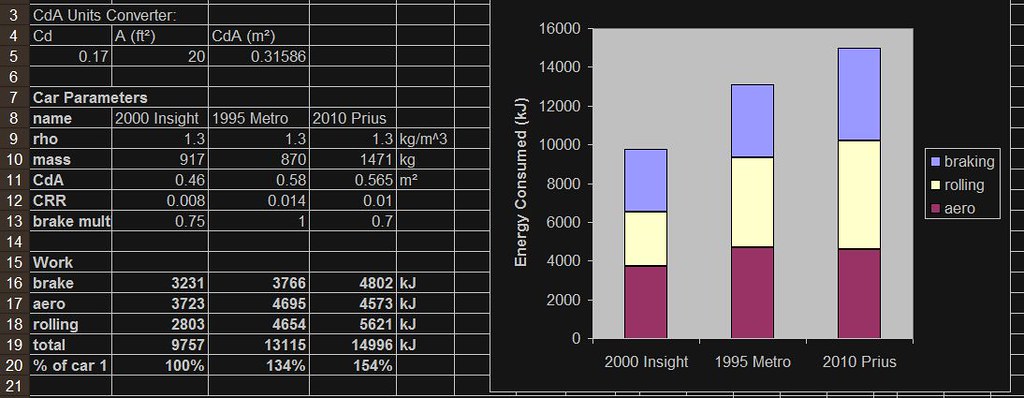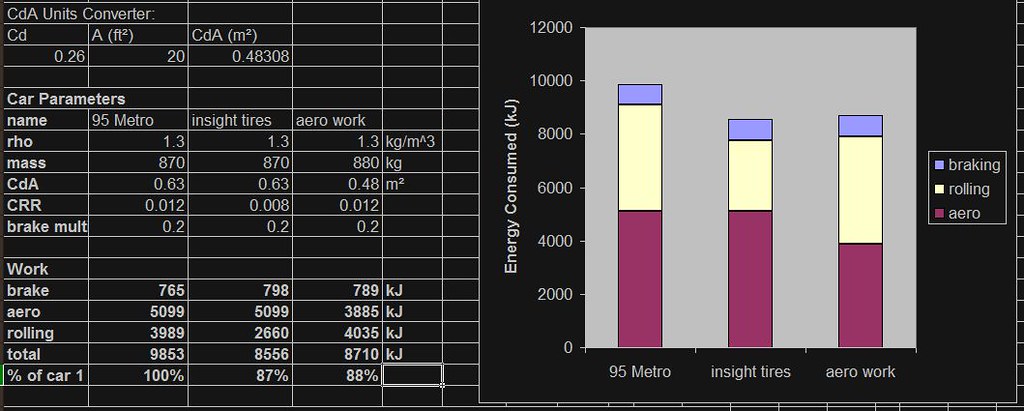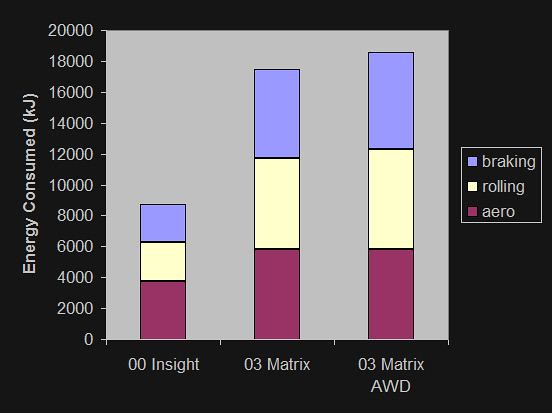I put together a simple spreadsheet that uses the road load equation to calculate how much energy it takes to move different configurations of cars down the road. You can compare two completely different cars, or estimate the impact of aeromodding, LRR tires, and weight reduction on a particular car.

I needed speed versus time plots to run the cars through, so I used the Federal Test Protocol and LA92 drive cycles. This includes lots of aggressive stopping and starting, a little high-speed cruising, and general disregard for fuel economy. Everyone here can beat the EPA by a healthy margin by driving a little more intelligently.
I've assumed that if you're slowing down faster than 0.05g, you're on the brakes. Some cars have regenerative braking, and some drivers don't believe in braking, so there's a brake multiplier field you can populate. You might want to set it to 0.2 if you DWB, or 0.6 if your hybrid recovers 40% of the energy that would normally be lost to braking.
MPG = bsfc * road load. This spreadsheet only covers half of the story. A mod might provide a 10% reduction in road load, but the mpg impact could be smaller or larger based on what the reduced road load does to your engine efficiency.
Here's a comparison of a hypothetical 1995 Geo Metro, which started with mediocre tires and stock aero. Correcting both of those issues would yield a 25% reduction in road load on the EPA cycle. If BSFC stayed the same, that would turn 45mpg into 60mpg, without any alteration to driving style.

Lastly, here's what happens when you add just the weight of an AWD system to a Matrix. This would be like carrying around the extra differential, driveshafts, structural weight, etc. in the hatch:

The spreadsheet is 830KB zipped, so it would need to be sent by e-mail. If you'd like a copy, PM me your e-mail address and I'll send it to you.
Edit: an EM member has offered to host it
here.